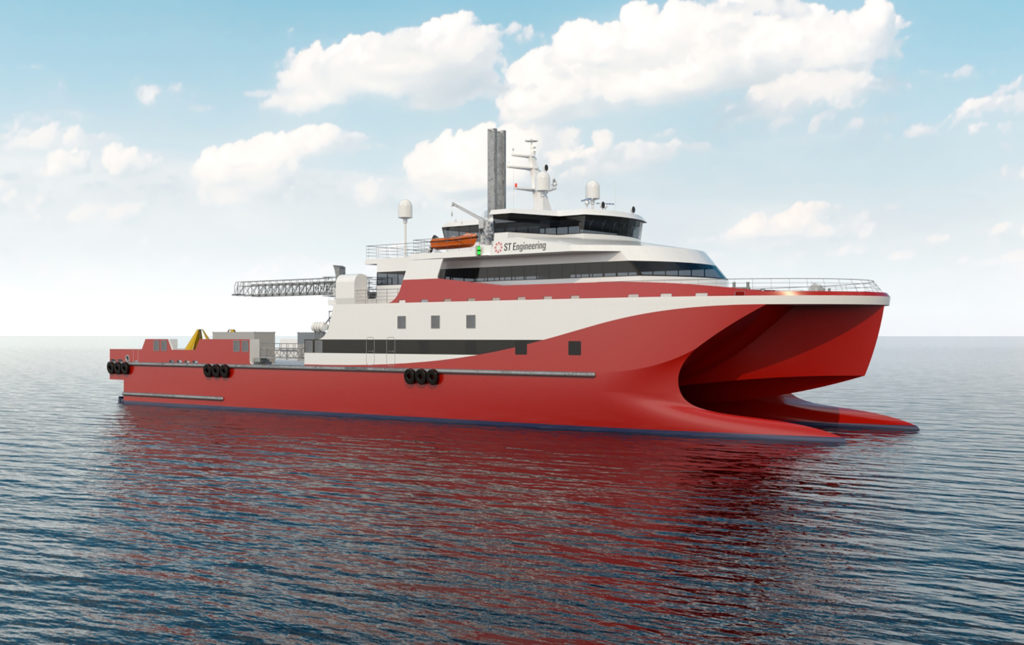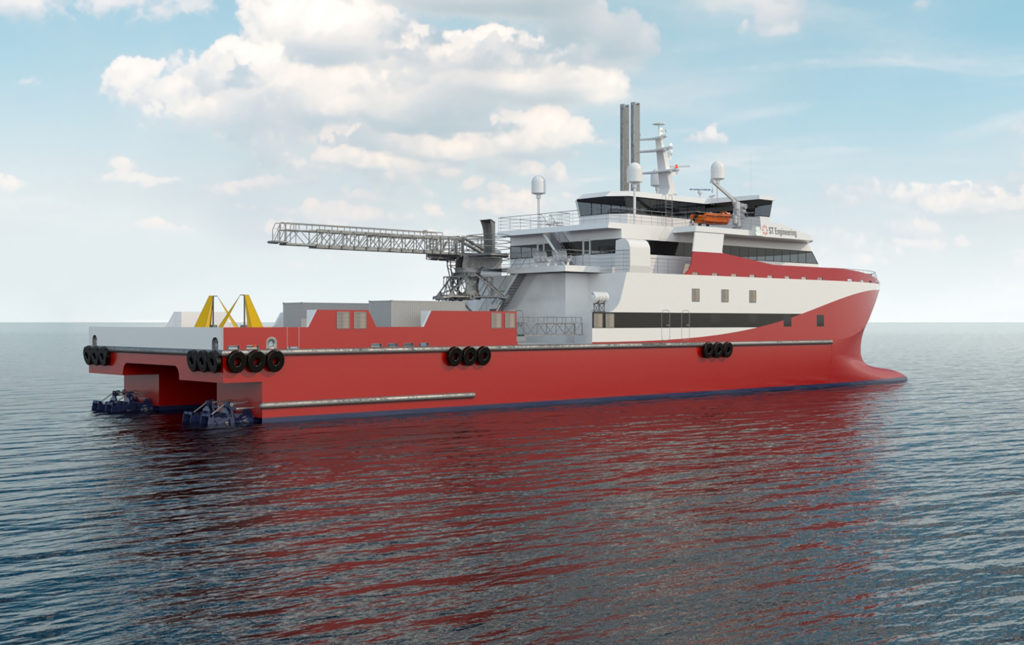Towards a future of sustainable shipping by reducing toxic emissions, At the same time, passenger comfort is improved and a cost-effective and safe transfer of offshore personnel is made possible. The ST Engineering marine arm reveals its 76 m long LNG catamaran speedboat with two fuels.

Developed in collaboration with Incat Crowther, ST Engineering has used the latest generation wave piercing semi-SWATH hull shape, where the main application of the ships is to drive at high speed and with low hull movements. This innovative fuselage is equipped with a drive control system consisting of a pair of forward-mounted active T-foils and aft-mounted active interceptors. These technologies enable comfortable high-speed transit and provide an excellent platform for operating a wide range of walk-to-work gangways from the rear deck, combined with the advanced dynamic positioning system (DP2).
Four robust and reliable ten-cylinder two-fuel engines boast a top speed of 40 knots and a pleasant cruising speed of 34 knots thanks to four water jets.
With extreme volatility in the price of oil, offshore operators are now more aware of operating costs, and are always looking for a safer and less expensive transfer solution wherever it is by air or sea.

The ship offers an incomparable transit experience 150 passengers across two seating classes, entertainment solutions, with increased privacy and comfort for the most demanding manager. In an accommodation configuration, the ship can comfortably accommodate 30 passengers in single cabins with private bathrooms and all the amenities that are required for a high quality offshore life.
"Commitment to environmentally friendly and sustainable shipping. We have set a new standard for personnel movement and ensured cross-market use for both our oil and gas and offshore wind customers. The accelerated development of dual-fuel and pure medium-speed LNG engines has created some exciting opportunities for designing cleaner and more environmentally friendly ships. Despite the physical limitations of large LNG tanks, the overall functionality that can now be accommodated on large platforms has redefined comfort and safety while maintaining the speed expectations of traditional high-speed diesel engines," said Michael Bell, senior vice president (marketing and business development) of the shipping sector ST engineering.